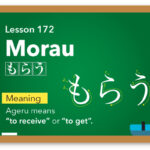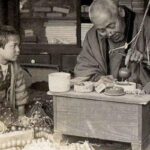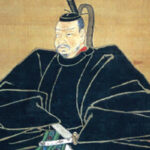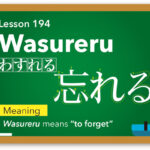My wife was recently asked to give an introduction to tea ceremony to a group over zoom. She’s a tea ceremony teacher (Urasenke School 茶道裏千家). Pre-Covid, she frequently gave demonstrations of tea ceremony, even appearing in an Ito-En Tea video.
The pandemic mostly put a pause on her tea ceremony activities. If you had to pick the one thing in this world that’s least suited to doing remotely, it’s probably tea ceremony. In fact, derived from mediation of Zen Buddhism, the entire point of tea ceremony is for a small group of people to be in a room together, away from the everyday world, and share a bowl of tea.
So while it was impossible to do a real demonstration of tea ceremony, she agreed to give a talk about tea ceremony.
g

g
She thought it would be nice if at the end of the ceremony, everyone could enjoy a cup of matcha together. But without the kettle, the tea bowl, the whisk, and of course the matcha, that’s hard to do.g
So when we saw single-serve matcha packets in the local Japanese grocery, she had an idea. The plan was to deliver a packet of matcha to each participant along with a higashi candy that provides the sweetness (matcha itself should be unsweetened) so everyone could enjoy tea at the same time.
The box of matcha packets looked easy. Just like instant coffee, pour a packet into a cup, add hot water and stir. The box claimed to be 100% ceremonial grade organic matcha in a “non-bitter extra-smooth blend.”
As soon as we return home, with anticipation we boiled water to try one of the matcha packets ourselves. We didn’t expect it to be as good as the real thing, but we figured it would be good enough to enjoy.
We were wrong. It was awful. It didn’t smell like matcha. It didn’t taste like matcha. It didn’t have the texture of matcha. And it was incredibly, overwhelmingly bitter. We had to spit it out and rinse our mouths.
The taste of good matcha is hard to describe. It’s a complex taste that touches all parts of the palette. A tiny bit sweet, a tiny bit bitter, a lot of earthiness (these are powdered leaves, after all), and a warmth that rolls down the throat with a creaminess that feels like a green smoothie. To me it tastes like the forest in the morning just as the dew is lifting.
The matcha packets tasted more like crumpled brown leaves. And they looked like it, too.
g

g
Comparing the powder from the packet with high quality matcha, the difference was clear.
Premium and ceremonial grade matcha, of course, starts with the best tea leaves. But the bigger reason it’s so expensive is it’s difficult to avoid oxidation.
The word matcha 抹茶 literally means “rubbing tea” because the green tea leaves are ground into a fine powder. Matcha is powdered tea leaves suspended in hot water.
g
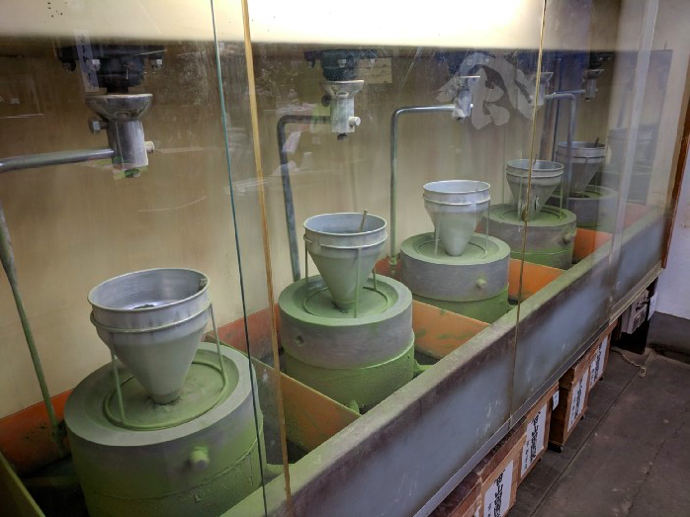
g
Matcha is ground using a stone mill in a milling machine like the ones in the above photo. However, if the leaves are ground too fast, it generates heat that oxidizes the tea. So the leaves have to be ground slowly.
The machines can only make enough tea for 10 cups per hour without causing oxidation. There are no shortcuts to making good quality tea.
Good quality matcha has the verdant green color of shiny, fresh tea leaves. Bad matcha is brown from oxidation. When the powder is mixed with hot water to make matcha, good matcha keeps its green color. Bad matcha looks kind of sick.
Of course, not all matcha is ceremonial quality. Matcha used for cooking and baking is much lower quality and far less expensive. But it’s meant to be mixed with other ingredients, not to be drunk by itself.
Rather than buying instant matcha powder, it’s simple to enjoy real matcha without a 4 hour tea ceremony.
Buy a tin of ceremonial grade matcha from a good tea house like Ippodo or Aiya. Expect to pay around $20.
Put 1 teaspoon of matcha powder in a tea cup for “thin tea” (usucha 薄茶) or 2 teaspoons for “thick tea” (koicha 濃茶) and add 2 oz of not quite boiling water. Then use an electric latte frother to whip the tea into a foam. That’s it!
The powder won’t dissolve in water, so it needs to be whisked thoroughly to mix the tea powder with the water.
Then sip and enjoy the taste of the morning forest. With a nice dose of caffeine.
g
.
g
.
『Learn Japan Deeply with DC!』
Writer: DC Palter
Read DC’s Stories More at Japonica Publication ( medium.com/japonica-publication )
(2/4/2022)

